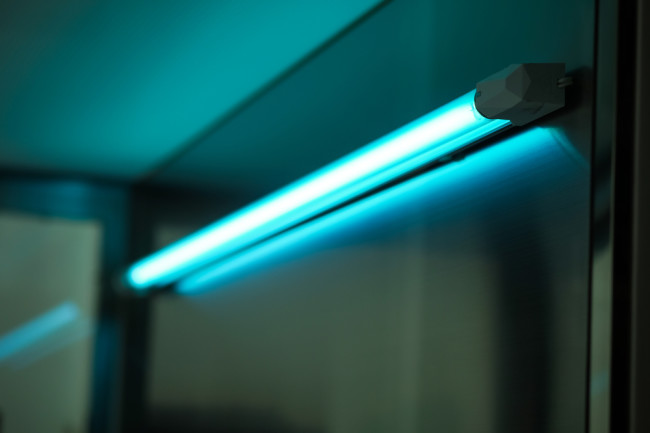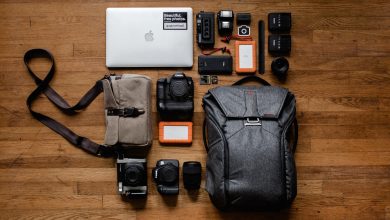The Power of UV Light: Illuminating Its Applications and Impact

Ultraviolet (UV) light, a portion of the electromagnetic spectrum beyond visible light, holds a spectrum of fascinating properties and applications across various fields. From germicidal sterilization and medical treatments to technological innovations and artistic displays, UV light has proven to be a versatile force with significant implications for our daily lives. This exploration delves into the characteristics, applications, benefits, and considerations surrounding UV light.
1. Understanding the UV Spectrum: Beyond the Visible Light
The electromagnetic spectrum encompasses a broad range of wavelengths, and UV light falls just beyond the violet end of the visible light spectrum. Categorized into three types—UVA, UVB, and UVC—UV light is characterized by shorter wavelengths and higher energy levels than visible light. UVA and UVB are present in sunlight, while UVC is largely absorbed by the Earth’s atmosphere.
2. Germicidal Power: UV Light as a Sterilization Tool
One of the most widely recognized applications of UV light is its germicidal properties. Specifically, UVC light in the wavelength range of 200 to 280 nanometers is known for its ability to destroy the DNA and RNA of microorganisms, rendering them unable to replicate. This germicidal effect has been harnessed for various purposes, including the sterilization of air, water, and surfaces.
UV-C light is commonly used in air purifiers, water treatment systems, and germicidal lamps to eliminate bacteria, viruses, and other pathogens. The effectiveness of UV-C in deactivating microorganisms makes it a valuable tool in environments where cleanliness and sanitation are critical, such as hospitals, laboratories, and food processing facilities.
3. UV Light in Medicine: Phototherapy and Beyond
UV light plays a vital role in medicine, particularly in the field of dermatology. Phototherapy, also known as light therapy, involves the controlled exposure of the skin to UV light to treat conditions such as psoriasis, vitiligo, and certain forms of eczema. The therapeutic effects are attributed to the modulation of immune responses and the suppression of abnormal cell growth.
Beyond dermatology, UV light has found applications in sterilizing medical equipment and surfaces. UV-C devices are utilized to disinfect hospital rooms, surgical tools, and even personal protective equipment (PPE), contributing to the prevention of healthcare-associated infections.
4. UV Light in Technology: Optical Storage and Beyond
UV light has played a pivotal role in technological advancements, particularly in the field of optical storage. Compact Discs (CDs), Digital Versatile Discs (DVDs), and Blu-ray Discs all utilize UV light for reading and writing data. The precision of UV lasers allows for high-density data storage, enabling the vast amounts of information found in these media formats.
Additionally, UV light is employed in various printing processes, including ultraviolet curing inks. UV-curable inks dry rapidly when exposed to UV light, making them suitable for high-speed printing applications in industries such as packaging, label printing, and graphic arts.
5. Forensic Applications: Revealing the Invisible
UV light’s ability to reveal substances that are otherwise invisible to the naked eye has proven valuable in forensic investigations. Crime scene investigators often use UV light to detect bodily fluids, bloodstains, and other evidence that might not be immediately apparent under normal lighting conditions. This method enhances the chances of identifying and collecting crucial evidence.
In the field of document examination, UV light is employed to reveal alterations, forgeries, and security features in documents. This application helps forensic experts analyze documents more thoroughly and detect fraudulent activities.
6. UV Light in Art and Entertainment: Luminescent Displays
The captivating glow of UV-reactive materials under black light has found its place in the realms of art and entertainment. UV light is frequently used in artistic displays, stage productions, and themed environments to create mesmerizing visual effects. Fluorescent paints, fabrics, and pigments emit vibrant colors when exposed to UV light, adding a surreal and captivating dimension to artistic expressions.
Nightclubs, concerts, and entertainment venues often incorporate UV lighting to enhance the atmosphere and create memorable experiences. The luminescent qualities of UV-reactive materials contribute to the creation of visually stunning environments that come to life under the influence of UV light.
7. Considerations and Safety Precautions: Protecting Against UV Exposure
While UV light offers numerous benefits and applications, it is crucial to be mindful of potential risks associated with prolonged exposure. Overexposure to UV radiation, particularly UVA and UVB from the sun, can lead to sunburn, premature aging, and an increased risk of skin cancer. Consequently, protective measures, such as sunscreen, protective clothing, and sunglasses, are essential when spending time outdoors.
In industrial and laboratory settings where UV-C light is utilized for germicidal purposes, precautions must be taken to shield individuals from direct exposure. UV-C radiation can be harmful to the skin and eyes, necessitating the use of appropriate protective equipment and ensuring that exposure levels comply with safety guidelines.
8. Advances in UV Technology: UV LEDs and Beyond
Advancements in technology have led to the development of UV light-emitting diodes (UV LEDs), providing a compact and energy-efficient alternative to traditional UV lamps. UV LEDs offer precise control over wavelength output, making them suitable for applications ranging from water purification and air disinfection to medical treatments and scientific research.
Additionally, research is ongoing to explore the potential use of UV light in the inactivation of certain viruses and bacteria, including those responsible for airborne diseases. The ongoing global focus on public health has spurred interest in exploring UV technology as an additional layer of defense against the spread of infectious agents.
Conclusion: Illuminating the Boundless Potential of UV Light
In conclusion, UV light stands as a versatile force with applications that span a multitude of fields, from healthcare and technology to art and entertainment. Its germicidal properties have been harnessed for the sterilization of air, water, and surfaces, contributing to enhanced sanitation in critical environments. In medicine, UV light plays a therapeutic role in treating skin conditions and serves as a valuable tool for disinfection.
Technological applications leverage UV light for high-density data storage, printing processes, and various scientific endeavors. In forensics, UV light reveals hidden evidence, while the luminescent properties of UV-reactive materials bring art and entertainment to life.
As technology continues to evolve and our understanding of UV led lights deepens, we can anticipate further innovations and applications. Whether it’s the precision of UV lasers in data storage or the mesmerizing glow of UV-reactive materials in artistic displays, UV light continues to illuminate new frontiers, promising benefits across a spectrum as vast and diverse as the light itself.





